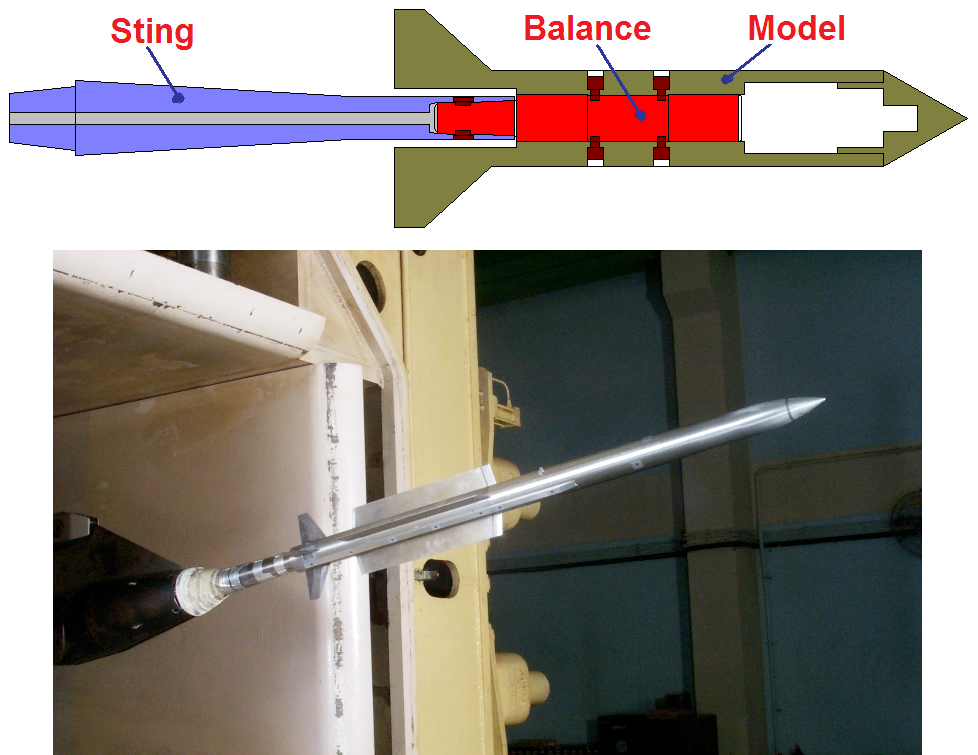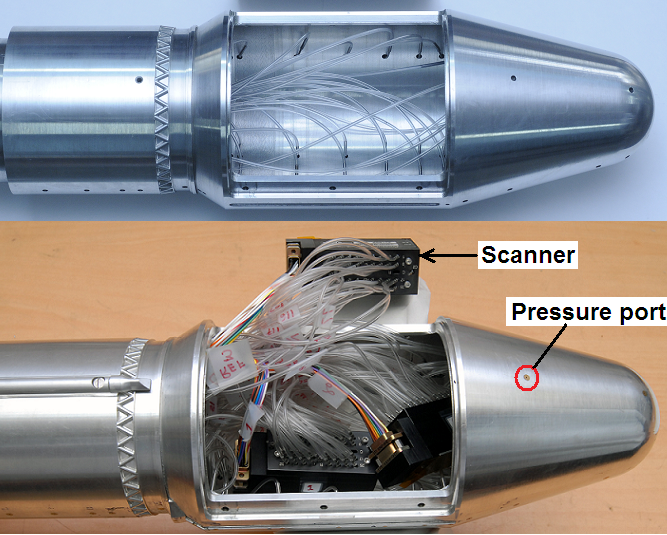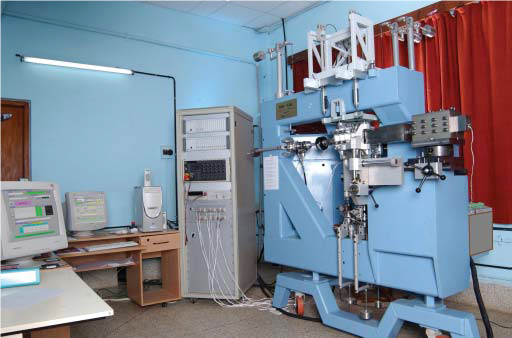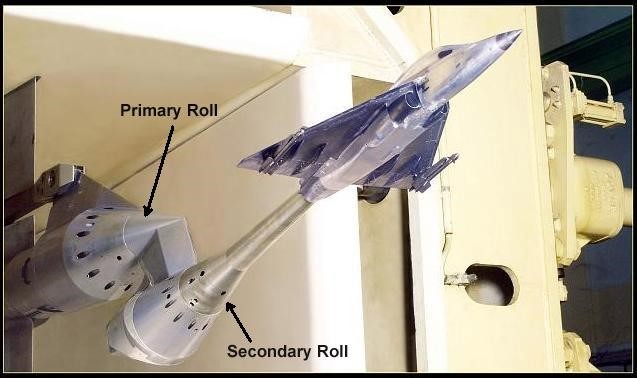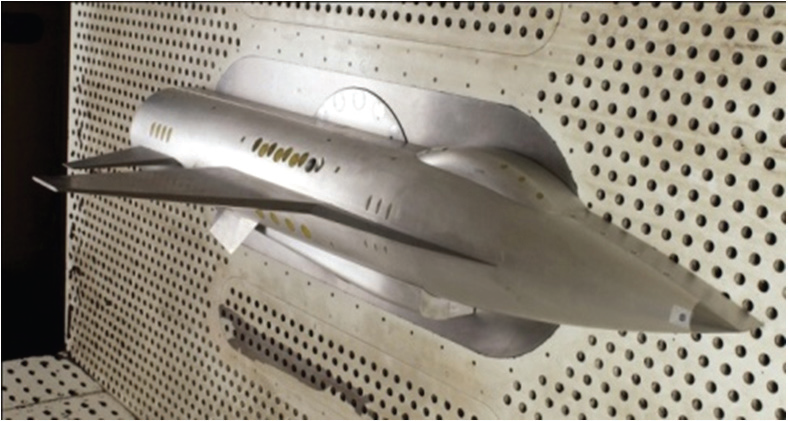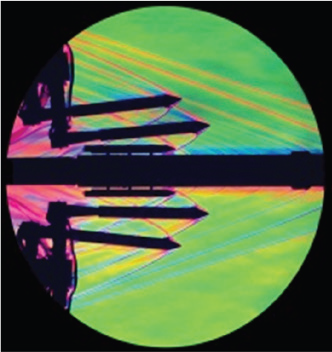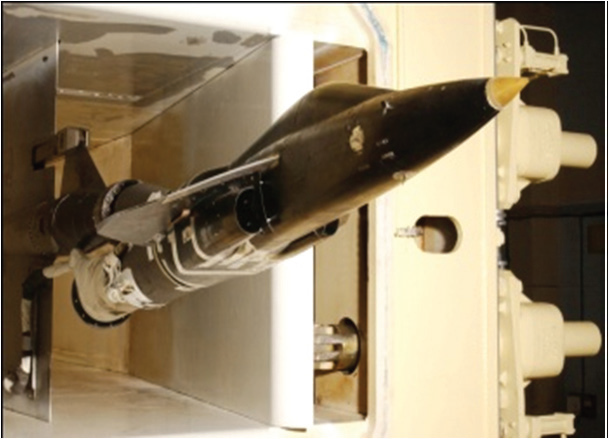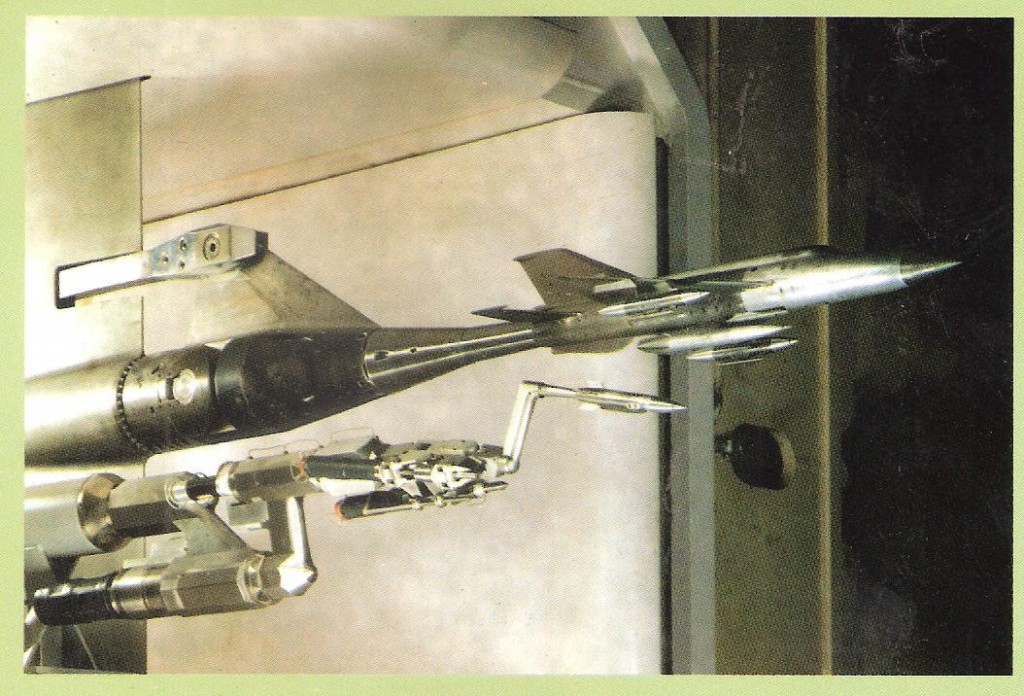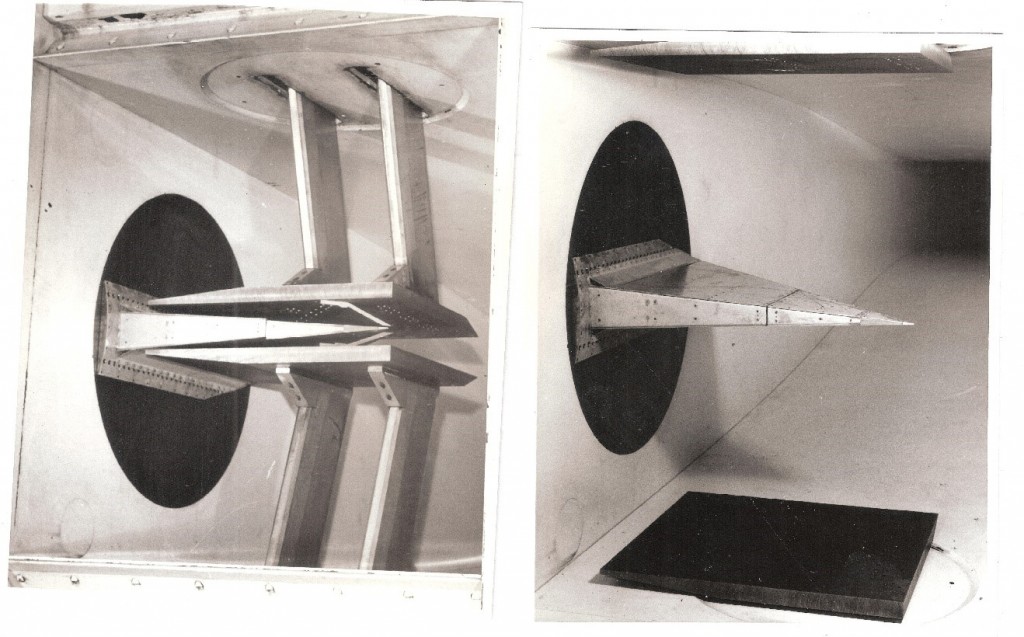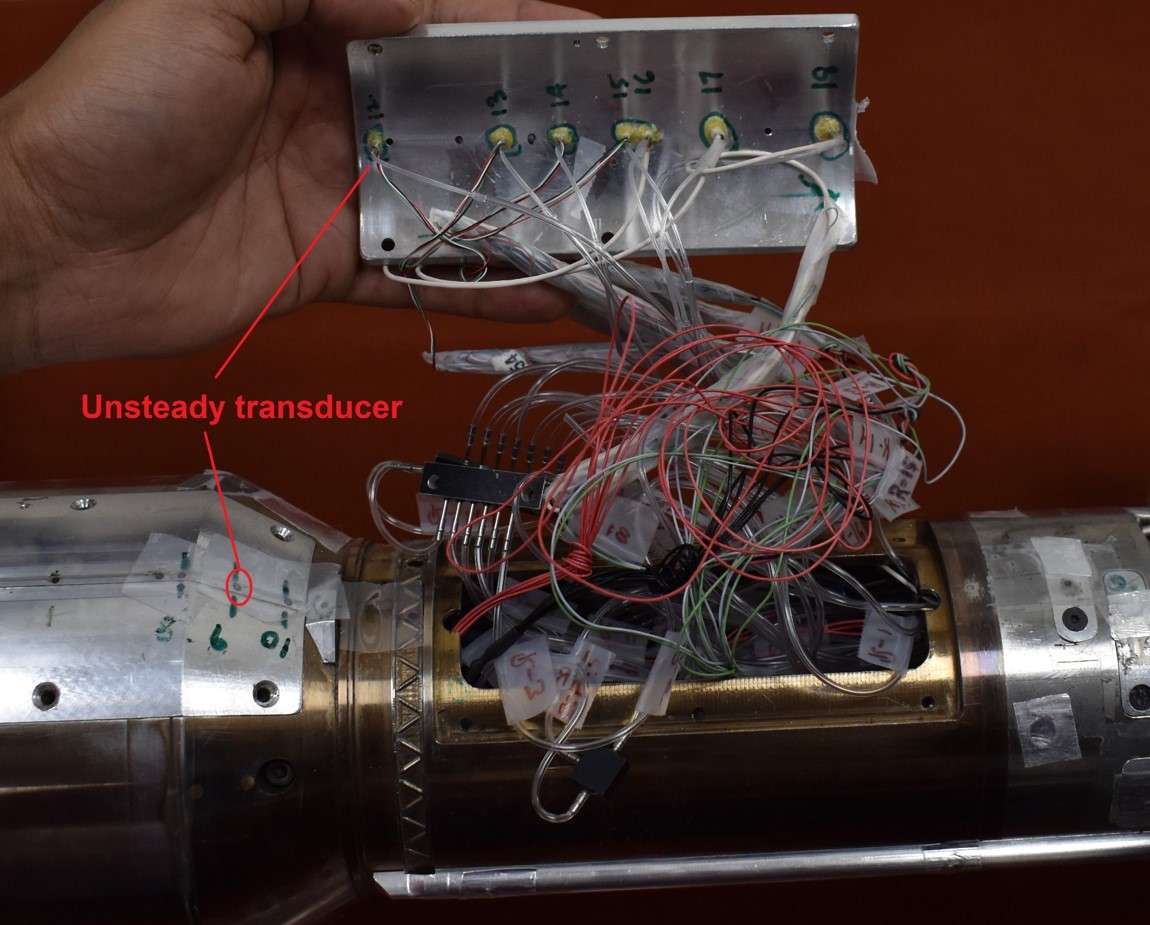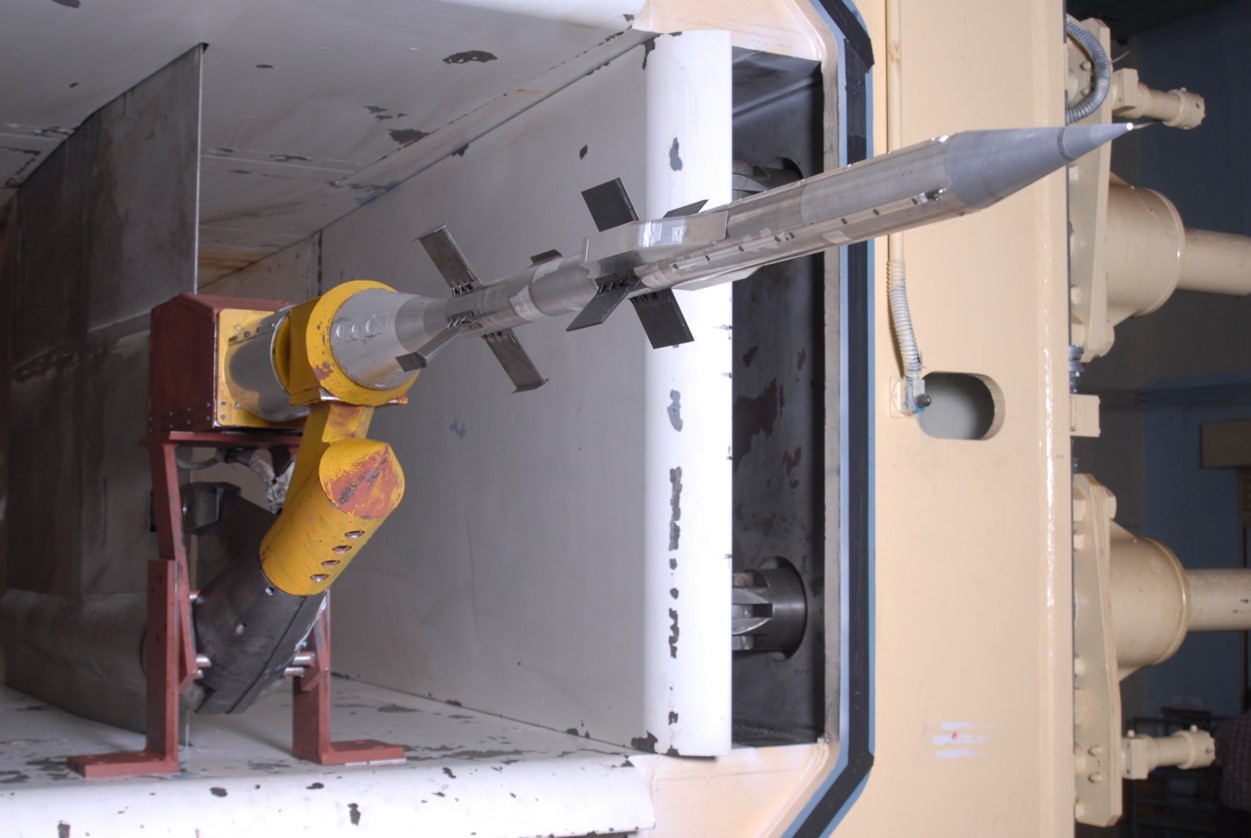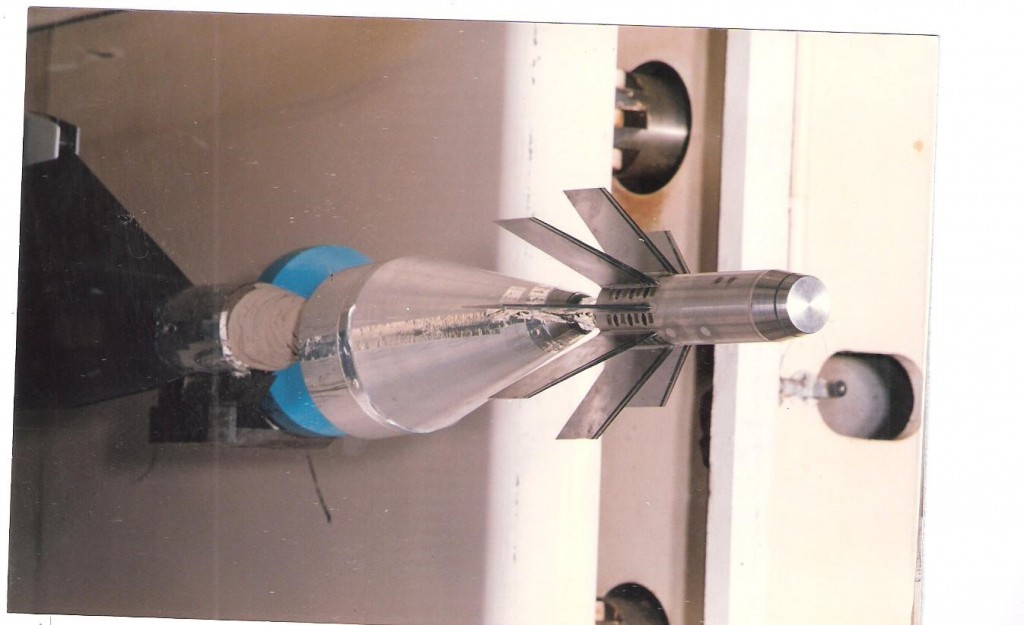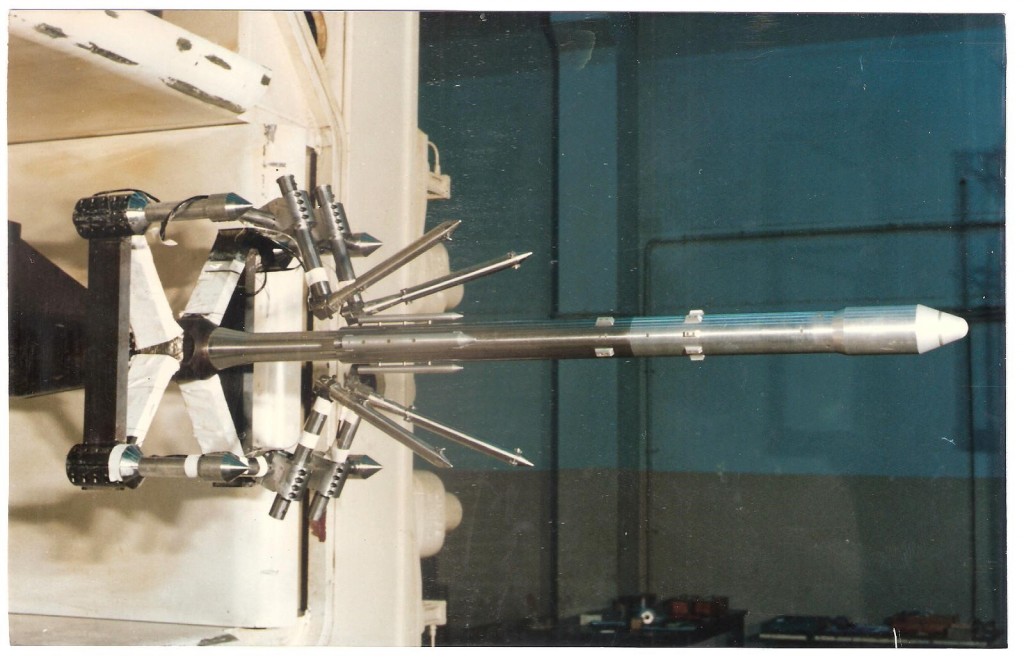
Wind tunnel simulation of multi-booster separation trajectories of launch vehicles
Safe separation of strap-on boosters from the core of a launch vehicle is an essential design and operational requirement. This important requirement is met by employing specially designed ejector mechanism in the launch vehicle. A novel test technique called the semi-captive trajectory technique (SECTT) was developed at NTAF for this simulation requirement.
A photograph of the test rig developed for conducting multi-booster separation trajectory studies is shown in Fig. 3. The rig features four independent articulated support mechanisms for each of the boosters and a central sting for the core vehicle. Each articulated mechanism provides six-degree-of-freedom capability using which the position of the booster defined by x, y and z co-ordinates of its centre of gravity and its angular orientation defined by pitch, yaw and roll angles, can be manually set and measured.

Fig. A view of rig for multi-booster separation trajectory studies on PSLV showing independent articulated support mechanism for each of the four separating boosters.

 English
English हिन्दी
हिन्दी
